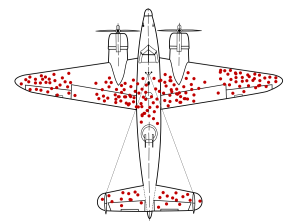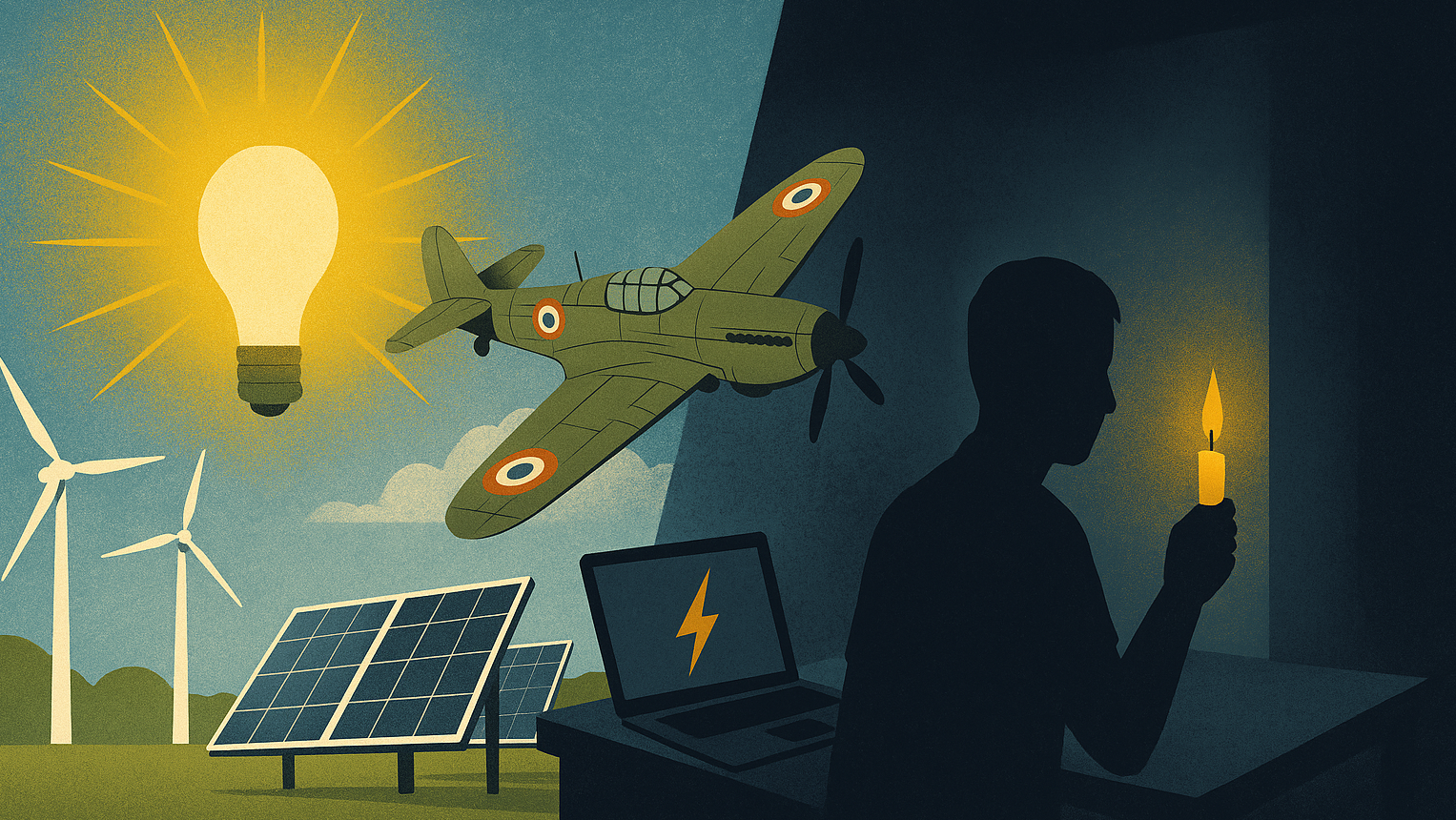- As in Wald’s airplanes, we must not reinforce the obvious, but the critical.
May 16, 2025
Today we celebrate the International Day of Light, but this year’s commemoration is marked by the notorious blackout on April 28. This outage was a powerful reminder of our vulnerabilities and reopened a crucial debate we raised some time ago: Are we moving towards a resilient and necessary electrification for decarbonization, or are we building a fragile dependency — a kind of “electrifixation” that ties us to a vulnerable system?
Today, in the midst of celebrating light, this question is more relevant than ever.
Wald’s airplane and the pointing finger: are we identifying the right vulnerabilities?
After the blackout, as expected, some eyes instinctively turned to renewables. Their reliability, intermittency, and management challenges were questioned — arguments repeated like mantras whenever something fails in the system. This has unleashed a hunt for vulnerabilities which, while sometimes valid, risks distracting us from the real objective.
This is where a mental exercise is useful. We recall one of the brightest lessons from critical thinking: the story of Abraham Wald during World War II and the survivorhip bias.

Wald was a statistician working for the U.S. Army during WWII, analyzing planes returning from missions with bullet holes to decide which parts to reinforce. The initial logic was to armor the damaged areas (wings, fuselage), but Wald pointed out a key mistake: they were only looking at planes that had survived those impacts. The planes that didn’t return were probably hit in critical points that, when struck, were fatal — such as engines or the pilot’s cockpit — areas that precisely showed no damage on the surviving planes. Wald’s conclusion was that the parts not damaged on returning planes were the ones that needed reinforcing because hits there caused the plane to go down. Survivorship bias lies in focusing only on what is visible, thus ignoring the truly critical points.
Let’s now apply this approach to our energy system. After the blackout, attention focused on what seemed most evident: the weaknesses of renewables. But what if we were repeating the error Wald helped avoid, reinforcing the wings of the plane when it is the “engines” that need armor?
To be Wald today means asking ourselves whether we are reinforcing the energy system at the points that really matter for its resilience and autonomy. The key question is whether we are strengthening the system’s critical structures or merely pointing at what’s in the foreground — the “survivors” of the impacts.
The question is not whether renewables are vulnerable — all technologies are vulnerable in some way — but whether we are reinforcing the true critical structures of the system. So, what could be those “engines” or “cockpits” of our energy system that require priority protection?
- Smart and resilient grid infrastructure: It’s not just about generating clean energy but about transporting and distributing it efficiently. We need modernized, digitized networks (smart grids) capable of managing bidirectional flows, anticipating problems, and isolating failures quickly.
- Large-scale and diversified energy storage: Storage is an indispensable partner for variable renewables.
- Optimization of interconnections: As we have seen, these are not a weakness but an ally for stability. However, they must be robust, properly sized, and managed with a coordinated European vision — not as a last resort.
- Adaptive governance: Investment in critical infrastructure and innovative technologies requires clear signals, legal certainty, and mechanisms that encourage resilience and innovation, not just the cheapest kilowatt-hour in the short term. Regulatory frameworks need to evolve at the pace of technology.
- Domestic industrial and technological capabilities: Fostering a European value chain in key technologies for the transition is essential for real strategic autonomy and competitiveness.
- Intelligent redundancy: A resilient system is not one that never fails but one that can quickly recover from failures. We need redundancy in critical systems and the ability to reorganize.
Focusing solely on criticizing the intermittency of a renewable source would be like patching Wald’s airplane wing. We need a comprehensive vision. Reinforcing these structural elements will allow us to build real and robust strategic autonomy, boost our industrial competitiveness, and, crucially, stay true to our inescapable commitment to decarbonization and the energy transition.
Shadows also teach us: not only reinforce the obvious, but the critical
The International Day of Light invites us to reflect on how we illuminate our energy future. The recent blackout, rather than paralyzing us, should catalyze a deeper, more honest debate about the resilience of our energy system. The energy transition is complex — a long flight in which we must ensure our “plane” is reinforced in all its critical points, not only where the “impacts” are most visible or popular to point out. Let us remember that shadows also teach us.
Adopting Wald’s survivor bias perspective can help identify those vital areas that, once strengthened, will ensure our commitment to decarbonization is not only firm and sustainable but also provides us with real strategic autonomy and renewed competitiveness. As with Wald’s planes, we must not reinforce the obvious but the critical. Let us not lose sight of the ultimate goal by focusing only on the most evident turbulences. After all, sometimes we need to be left in the dark to truly appreciate the importance of light.

